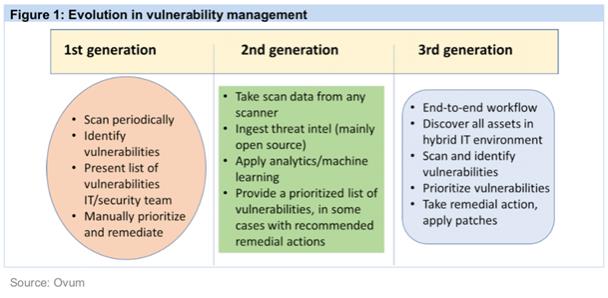and the GAAP andnon-GAAP effective income tax rate for the first quarter and full year 2020. Our expectations and beliefs regarding these matters may not materialize, and actual results in future periods are subject to risks and uncertainties that could cause actual results to differ materially from those projected. These risks include our ability to continue to develop platform capabilities and solutions; the ability of our platform and solutions to perform as intended; customer acceptance and purchase of our existing solutions and new solutions; real or perceived defects, errors or vulnerabilities in our products or services; our ability to retain existing customers and generate new customers; the budgeting cycles, seasonal buying patterns and length of our sales cycle; our ability to manage costs as we increase our customer base and the number of our platform solutions; the market for cloud solutions for IT security and compliance not increasing at the rate we expect; competition from other products and services; fluctuations in currency exchange rates, unexpected fluctuations in our effective income tax rate on a GAAP andnon-GAAP basis, our ability to effectively manage our rapid growth and our ability to anticipate future market needs and opportunities; any unanticipated accounting charges; and general market, political, economic and business conditions in the United States as well as globally. The forward-looking statements contained in this press release are also subject to other risks and uncertainties, including those more fully described in our filings with the Securities and Exchange Commission, including our Quarterly Report on Form10-Q for the quarter ended September 30, 2019, filed with the Securities and Exchange Commission on October 31, 2019.
The forward-looking statements in this press release are based on information available to Qualys as of the date hereof, and Qualys disclaims any obligation to update any forward-looking statements, except as required by law.
Non-GAAP Financial Measures
In addition to reporting financial results in accordance with GAAP, Qualys provides investors with certainnon-GAAP financial measures, includingnon-GAAP gross profit,non-GAAP gross margin,non-GAAP operating expenses,non-GAAP operating income,non-GAAP net income,non-GAAP net income per diluted share, adjusted EBITDA (defined as earnings before interest expense, interest income and other income (expense), net, taxes, depreciation, amortization, stock-based compensation,non-recurring expenses, and acquisition-related expenses that do not reflect ongoing costs of operating the business) andnon-GAAP free cash flows (defined as cash provided by operating activities less purchases of property and equipment and principal payments under capital lease).
In computingnon-GAAP financial measures, Qualys excludes the effects of stock-based compensation expense,non-recurring expenses and acquisition-related expenses that do not reflect ongoing costs of operating the business. Qualys believes that thesenon-GAAP financial measures help illustrate underlying trends in its business that could otherwise be masked by the effect of the income or expenses, as well as the related tax effects, that are excluded innon-GAAP gross profit,non-GAAP gross margin,non-GAAP operating expenses,non-GAAP operating income,non-GAAP net income,non-GAAP net income per diluted share, adjusted EBITDA andnon-GAAP free cash flows.
Furthermore, Qualys uses some of thesenon-GAAP financial measures to establish budgets and operational goals for managing its business and evaluating its performance. Qualys believes thatnon-GAAP gross profit,non-GAAP gross margin,non-GAAP operating expenses,non-GAAP operating income,non-GAAP net income,non-GAAP net income per diluted share, adjusted EBITDA andnon-GAAP free cash flows provide additional tools for investors to use in comparing its recurring core business operating results over multiple periods with other companies in its industry.
Although Qualys does not focus on quarterly billings, Qualys provides calculated current billings (defined as total revenue recognized in a period plus the sequential change in current deferred revenue in the corresponding period) to assist investors and analysts in assessing its operating performance.

